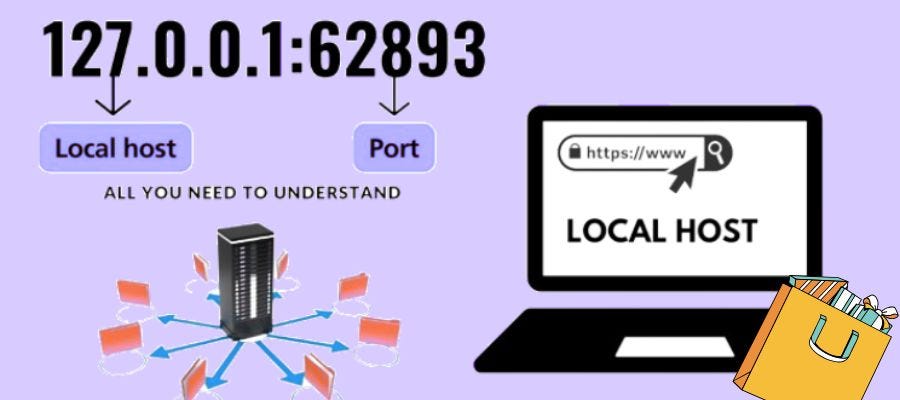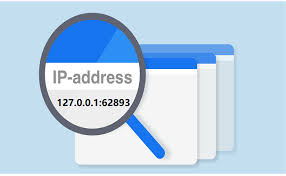Table of Contents
Introduction to the Port Warning 127.0.0.1:62893
If you have encountered port warning 127.0.0.1:62893, you certainly join others in exasperation. For individuals using a program, such port warnings can often serve as a connection configuration. The port warning in question hints at a loopback IP, which in essence, points to your PC, hinting at a more specific issue that needs troubleshooting. For these reasons, we should explore the warning in more detail to uncover system issues that can cause such port warnings.
Explanation of the IP Address and Port Number
An IP address known as 127.0.0.1 is often named the loopback address, which is a special destination address that redirects back to your device. The loopback address is used to self-test a computer to a certain extent, as well as make troubleshooting easier. The number after the IP address, in this case 62893, is classified as a port number.
A port is an access point which can be used as an entrance or exit for data to be sent or received from processes in a networked device. Such details aid in diagnosing numerous software applications or networking issues far more efficiently and without the need for external internet interaction.
Possible Causes of the Port Warning
First of all, there can be network issues that can arise due to different factors. Sometimes a local connection can get unstable. Local connection issues can lead to problems accessing desired services within a local network.
Then, another critical issue can be that of the firewall. Firewalls that are extremely overprotective might, unfortunately, block access to specific ports. It is of utmost importance to make sure that no upper or lower access rules are present, as a firewall’s approach is label-based. Overprotective firewalls are not the only issues. Dangerous software or files that are present on the computer can pose a real risk.
Other problematic software or files can not only intercept port operations but can also take control of specific operations as well.
An underlying combination of weak local connection, very overprotective walls, and insecurities yields a proper reason to deal with pop-up port access thresholds. A prompt with access issues with pop-up and state ports is not to be accessed or modified.
A. Network Issues 127.0.0.1:62893

As your PC communicates with itself, this IP address is referred to as the localhost.
Network issues can lead to local application connectivity restrictions, which in turn can block access to this particular port. Make sure that your local network settings are conflict-free; encrypted networks, firewalls, and network IP settings can standalone lead to local application connectivity issues.
VPNs and proxies can interfere with localhost communications as well. The traffic rerouting vision tends to disrupt traffic, therefore slowing down or blocking the connection.
Router settings and configurations can add to the issues as well.
B. Firewall Settings 127.0.0.1:62893

As a component of the broader system security architecture, firewall configurations can explain the port alert regarding 127.0.0.1:62893. Attempts to connect to a local address may receive an automated response because the firewall attempts to restrict network communication too rigorously. There are myriad reasons that programs can fail. Encountering an open circuit, as described here, results in error or warning messages. Applications that depend on that circuit for normal functioning can be needlessly disrupted.
As a best practice, ensure that firewall rules are correctly configured.
Verify that the applications in use have the necessary firewall exceptions granted for port 62893. You might need elevated privileges to alter these configurations. Determine the access permissions required to change the settings before taking action. An approach that balances system usability and security would be ideal. Permitting legitimate communications while thwarting all unauthorised access attempts—this maintains the security posture and performance of the system.
C. Malware or Virus Infection
The alert mechanisms active on your operating systems can reveal malware and virus infections. Consider the scenario in which you see a port warning, such as 127.0.0.1:62893.
While a user may be misled into thinking that their device is not functioning as specific applications are accessing the required network ports, a significant fraction of malware is designed to be sneaky so as not to be detected. The applications either appear to be harmless or are highly useful, which might trigger warnings or block essential connections.
Idle time on your device, frequent and inexplicable crashes, as well as the emergence of peculiar visuals are indicators of infections that the user must safeguard themselves against. Ensure you are protected against such sight signs as they vastly differ in symptoms, being commonplace.
Active virus protection, as well as triggered updates and complete scans of the device’s memory and active systems, is required to remove hidden threats your device may be containing within its folders, files and processes.
How to Check for Malware or Virus Infection
To begin, one needs to perform a full computer scan using the antivirus. Most antivirus software out there can do this. In case that is not an option, one can download either Avast or Malwarebytes. These two, among a bounty of other software, are capable of detecting and removing multiple forms of malware. Focusing on the most glaring signs is key. Programs running without user commands are a clear sign that something is wrong.
Unexpected changes in the network traffic are another issue of importance. In addition, paying attention to the overall computer performance and looking for unknown processes using software like Task Manager is instrumental. If these processes are found, a basic internet search would help figure out what they are before taking any action. Remember to patch the operating system and other software frequently. Hiding infections becomes much more difficult when systems are continuously updated.
Conclusion: Don’t Let the Port Warning Slow You Down 127.0.0.1:62893
Most users would find seeing the port notification 127.0.0.1:62893 a nagging problem. Run a check on the computer for fundamental issues such as loose cable connections, firewalls, or possible malware. Checking firewalls as well as running a malware check not only increases system health but also minimises the chances of the previously mentioned alert popping up. Make sure the port 127.0.0:62893 warning does not disrupt the device’s computing and browsing capabilities. Alerts can be set to snooze as long as the computer in question undergoes a proper health check and the machine’s safety is ensured.

 Unusual Award N.13: A Tribute to Distinctive Proportions
Unusual Award N.13: A Tribute to Distinctive Proportions  Elisabeth Moss Weight Gain Inspiring Journey Breaking Hollywood Stereotypes
Elisabeth Moss Weight Gain Inspiring Journey Breaking Hollywood Stereotypes  Lance Stephenson Net Worth Impressive Rise Despite an NBA Journeyman Career
Lance Stephenson Net Worth Impressive Rise Despite an NBA Journeyman Career  Did rudy and elaine break up Heartbreaking News or Just Rumors?
Did rudy and elaine break up Heartbreaking News or Just Rumors?  wnl medical abbreviation Powerful and Positive Role in Medical Records
wnl medical abbreviation Powerful and Positive Role in Medical Records  noah jupe movies and tv shows: Inspiring Story of His Career, Age, Net Worth, and Success
noah jupe movies and tv shows: Inspiring Story of His Career, Age, Net Worth, and Success